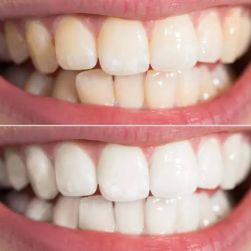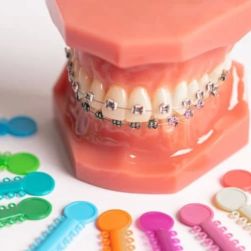Finding Affordable Dental Care with Insurance: My Journey to Smarter Dental Spending
When I first started looking for affordable dental care with insurance, I was honestly overwhelmed by the options and confusion surrounding coverage. I know many people feel the same way—dental care is important, but it can be expensive, and finding the right insurance coverage that fits your needs and budget is tricky. Through my experience and a lot of research, I’ve discovered a few strategies that help make dental care more affordable. If you’re in the same boat, I’m here to share what I learned with you so you can find the best value for your dental insurance while getting the care you need.
1. Know Your Insurance Plan’s Benefits and Limitations
One of the first steps I took in reducing my dental care costs was to carefully understand the details of my dental insurance policy. It's crucial to know exactly what your plan covers, as well as its limitations. For example, I initially didn't realize that my insurance only covers two cleanings per year. At first, I was paying out-of-pocket for additional visits, but once I understood my plan, I was able to better schedule my appointments to fit within my coverage. Here's how you can do the same:
- Understand your coverage: Make sure you know which dental procedures are covered by your plan and which are not. Most plans will cover basic care like cleanings, fillings, and checkups, but more complex treatments like crowns or orthodontics might require additional costs or waiting periods.
- Be aware of your annual maximum: Many dental insurance policies have a cap on how much they’ll pay per year. Once you hit that limit, you’ll have to pay out-of-pocket for additional treatments.
- Check for exclusions: Some insurance plans might exclude certain types of dental care, such as cosmetic treatments like teeth whitening. Knowing what is and isn’t covered will help you avoid surprise costs.
2. Regular Preventive Care Can Save You Big
When I was younger, I didn’t prioritize regular dental checkups, and I ended up needing costly procedures down the line. Now, I make sure to visit the dentist at least twice a year for cleanings and checkups. These visits are typically covered 100% by my insurance plan. Preventive care can help detect issues early on, which can save you money in the long run. Here’s why you should schedule regular visits:
- Prevent costly problems: Routine cleanings and checkups help detect cavities, gum disease, or other issues early, before they require expensive treatments like fillings or root canals.
- Fully covered services: Most insurance plans cover preventive care at no additional cost to you, meaning there’s no excuse to skip these visits.
- Stay on top of your dental health: Regular visits help ensure that your teeth and gums are in good shape, reducing the risk of needing major procedures later on.
3. Find In-Network Dentists to Maximize Your Insurance Benefits
One mistake I made early on was going to out-of-network dentists, which significantly increased my out-of-pocket costs. I quickly learned that staying within my insurance plan’s network of providers is the best way to ensure that I pay the lowest possible rates for dental care. Here’s what I’ve learned about in-network care:
- Lower costs: In-network dentists have agreed to lower fees with your insurance provider, meaning you won’t have to pay the full price for treatments.
- Better coverage: Your insurance plan is more likely to cover the full cost of procedures when you see an in-network dentist, saving you money in the process.
- Find dentists in your area: Check your insurance provider’s website for a list of in-network dentists near you to make sure you’re choosing a provider who will give you the best coverage and prices.
4. Use Discount Dental Plans to Supplement Your Insurance
One of the ways I’ve saved even more on dental care is by using a dental discount plan. These plans are separate from dental insurance and offer reduced fees at participating dentists. While discount plans don’t provide the same level of coverage as insurance, they can help lower costs for procedures that might not be covered by your plan. Here’s how I used a dental discount plan to my advantage:
- Combine with insurance: You can use a discount plan in addition to your dental insurance, helping you save even more on treatments not fully covered by your policy.
- Save on treatments: Discount plans can provide significant savings on treatments like fillings, crowns, and even orthodontics.
- Choose a reputable plan: Make sure you research dental discount plans carefully to ensure they are legitimate and offer significant savings at well-regarded dental practices.
5. Look for Financing Options or Payment Plans
Sometimes dental care can be expensive, especially when you need major treatments. In those situations, I’ve found that asking about financing options or payment plans at the dentist’s office can help spread out the cost. Many dentists now offer in-house payment plans that let you pay for treatments over time. I also found third-party financing companies that offer low-interest loans for dental procedures. Here’s how you can use financing to make dental care more affordable:
- Ask about payment plans: If you need a major procedure, such as a root canal or dental implants, ask your dentist if they offer payment plans to break the cost into smaller, more manageable payments.
- Use third-party financing: Some dental offices partner with financing companies that specialize in healthcare loans. These loans often come with low interest or promotional 0% rates if paid within a certain time frame.
- Check for discounts: Some dental offices will offer discounts for patients who pay for their treatments upfront, so it’s worth asking about this option if you can afford to pay in full.
6. Explore Government or Nonprofit Assistance Programs
If you find yourself struggling to afford dental care, especially if you don’t have insurance, you might want to look into government or nonprofit programs that offer free or reduced-cost dental services. I’ve found that some dental schools provide discounted treatments by students under professional supervision, and some nonprofit organizations offer dental care for low-income individuals. These options are worth considering if you're in need of affordable dental care:
- Check with dental schools: Dental schools often provide services at a lower cost because students are supervised by experienced instructors. This can be a great option for basic care.
- Look for charitable dental clinics: Some nonprofit organizations hold free dental clinics or offer low-cost dental care in underserved communities.
- Explore government assistance: In some cases, government programs may help provide coverage for dental care if you meet certain income requirements.
7. Plan Ahead for Major Dental Treatments
When I needed a dental implant, I learned the hard way that planning ahead can save a lot of money. If you know you need major dental work in the future, start researching and saving early. Some insurance policies have waiting periods for major procedures, so it's important to time your treatments accordingly. Here’s what I’ve done to prepare:
- Get multiple quotes: For expensive procedures like implants or crowns, I recommend getting quotes from several dental providers to ensure you’re getting a fair price.
- Use your insurance’s waiting period wisely: If your policy has a waiting period for certain procedures, try to schedule them well in advance of when you need them.
- Explore alternative treatments: In some cases, you might be able to opt for a less expensive procedure that can achieve similar results.
By using these tips, I’ve managed to find affordable dental care that fits my budget without sacrificing the quality of treatment. With the right approach, you too can reduce your dental costs while still maintaining good oral health. Start by reviewing your insurance coverage, exploring discount plans, and planning ahead for major treatments, and you'll be on your way to better dental savings.






